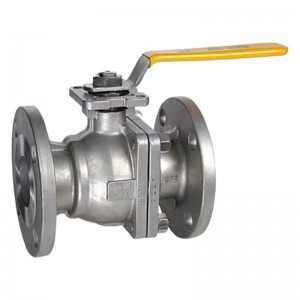In this article, we’ll explore how ball valves have adapted to the needs of marine applications, highlighting their design features, key benefits, and why they remain indispensable in shipbuilding and maintenance.
1. What Makes Ball Valves Ideal for Marine Applications
Ball valves are primarily designed to control the flow of liquids and gases with a spherical ball that has a hole in the middle. By rotating the valve handle, the ball rotates, allowing or restricting the flow. In marine environments, ball valves offer several advantages
- Quick and Reliable Operation: Ball valves provide a tight seal, which ensures efficient, quick opening and closing of systems, a critical feature for maritime operations that require rapid control over various fluids.
- Compact Design: Their compact nature makes ball valves ideal for installation in space-constrained marine systems without compromising performance.
- Minimal Maintenance: Ball valves have fewer parts in comparison to other valve types, which reduces the likelihood of mechanical failure and the need for frequent maintenance. This is essential for marine vessels that operate in remote and harsh environments.
2. Adaptation to Marine Conditions
Marine environments are known for their challenging conditions—saltwater, humidity, and extreme temperatures can take a toll on equipment. Ball valves used in marine applications have undergone several adaptations to handle these conditions effectively.
Corrosion is a major concern for any component that operates in marine environments. To combat this, ball valves are typically constructed from corrosion-resistant materials, such as stainless steel or bronze. These materials are chosen for their durability and resistance to the corrosive effects of saltwater.
- Stainless Steel: Often used in marine ball valves, stainless steel’s inherent resistance to rust and pitting makes it ideal for use in seawater systems, ensuring long-term performance and minimizing maintenance.
- Bronze: Commonly found in marine applications due to its resistance to corrosion and its ability to withstand the rigors of salty and humid environments, ensuring longevity and durability.
Enhanced Sealing Performance
Marine ball valves are also equipped with advanced sealing technology to withstand the pressures and fluids found on vessels. For example, some ball valves feature PTFE (polytetrafluoroethylene) seals, which offer excellent resistance to chemical corrosion and high temperatures—ideal for controlling fuel and coolant lines in engine rooms or other high-pressure systems.
Temperature and Pressure Resistance
Marine environments can expose equipment to extreme conditions, whether high-pressure systems onboard large ships or fluctuating temperatures in engine compartments. Ball valves are specifically designed to operate under a range of temperatures and pressures, ensuring they function effectively across various systems.
3. Applications of Ball Valves in Marine Systems
1. Fuel Systems
Ball valves regulate the flow of fuel through pipelines, ensuring that fuel is transported safely and efficiently to engines and other critical systems. Their quick shutoff capabilities are crucial in emergency situations where fuel must be rapidly isolated.
2. Ballast Systems
In ballast systems, ball valves are employed to control the intake and discharge of water that maintains the ship’s balance and stability. The ability to seal tightly under varying pressure conditions ensures that ballast water is managed efficiently.
3. Cooling Systems
Ball valves are essential in controlling the flow of coolant to vital equipment, such as the engine. Proper flow regulation ensures that the machinery is kept at optimal temperatures, preventing overheating and reducing the risk of mechanical failure.
4. Fire Suppression Systems
In the event of a fire, it’s vital to shut off specific pipes that may be contributing to the hazard. Ball valves allow for the rapid isolation of certain parts of a fire suppression system, ensuring quick response times during emergencies.
5. Hydraulic and Pneumatic Systems
In hydraulic systems onboard ships, ball valves are employed to control the flow of oil, water, or other fluids that help power machinery. These valves allow operators to regulate pressure and flow to ensure proper system function.
4. Key Advantages of Ball Valves in Marine Applications
1. Tight Sealing Capabilities
One of the most significant advantages of ball valves is their ability to achieve a tight seal when closed, preventing leaks even in high-pressure systems. This is particularly important in marine applications, where leaks can lead to hazardous conditions and environmental concerns.
2. Ease of Operation
Ball valves are designed for ease of use, typically requiring just a quarter turn to open or close the valve completely. This is particularly advantageous in emergency situations when time is of the essence.
3. Durability
Ball valves are known for their long lifespan and durability, even under harsh operating conditions. Whether it’s managing high temperatures, corrosive chemicals, or fluctuating pressures, ball valves are built to last, reducing downtime and maintenance costs.
4. Versatility
Ball valves are versatile and adaptable to a wide range of applications, from controlling water flow to handling fuel and chemical lines. Their ability to function in different systems makes them indispensable on ships of all sizes.
5. Why Ball Valves Remain a Top Choice for Marine Applications
Ball valves have adapted to meet the complex and demanding needs of the marine industry, thanks to their reliability, ease of operation, and long-lasting performance. These characteristics make them an invaluable asset for maintaining the safety and efficiency of shipboard systems. Whether controlling fuel, water, or ballast, ball valves continue to be a preferred choice due to their ability to perform under the most challenging conditions.
Post time: Feb-13-2025

